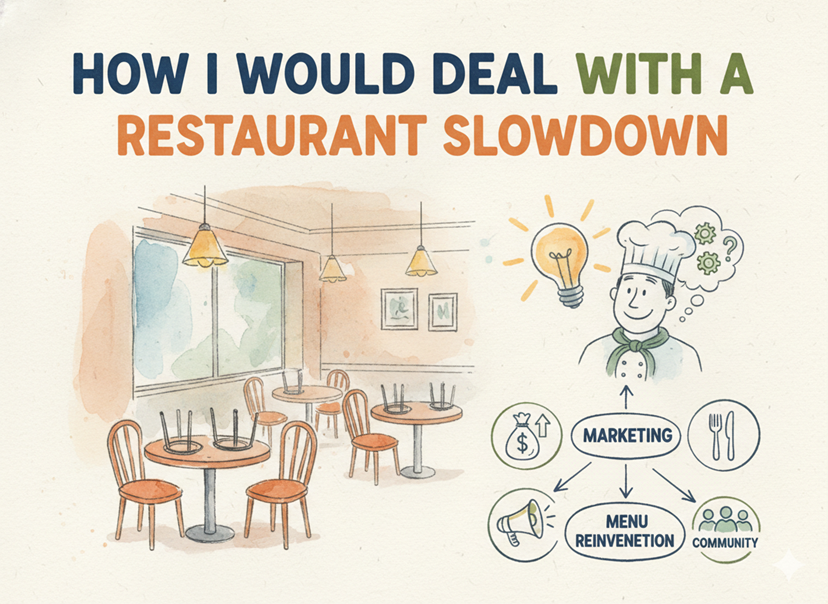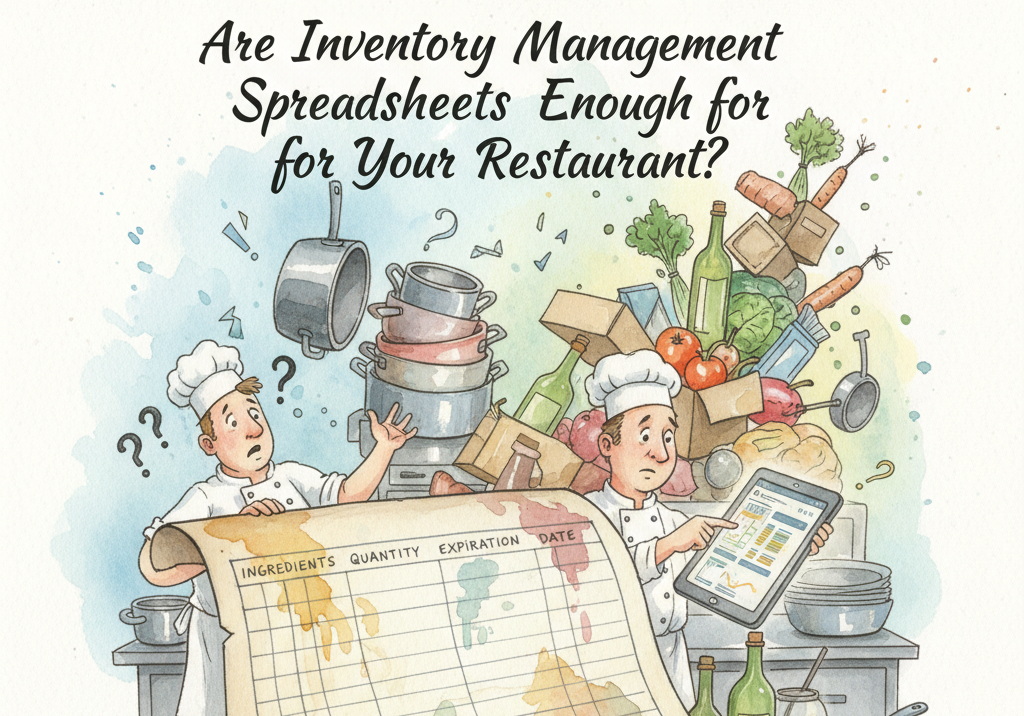Most cafes in Malaysia fail because they aren’t prepared to deal with challenges or they don’t have the right knowledge to solve common problems. Have you thought about what will make you stand apart from them? No, Not money! But the right tools can help you stand apart from your competitors and not become a failure. In this blog, we have discussed in detail the most common problems of cafes and what is the best solution to them.
1. Keeping Up with Customer Preferences
Malaysian customers are diverse, and they have varying tastes, dietary needs, and an ever-changing appetite for food trends. This diversity makes it challenging to cater to everyone. For instance, one day, there’s a sudden surge in demand for matcha lattes, and the next, oat milk takes over. Such rapid shifts in preferences can make it difficult for you to plan your menu and inventory.
The main problem here is the speed at which trends change. Constantly updating your menu can be expensive, and trying to cater to every trend could lead to wastage or overly complicated operations. Additionally, some customers prefer local flavors like teh tarik and nasi lemak-inspired dishes, while others demand international options. Balancing these expectations is a complex task.
To tackle this, stay informed about food trends using tools like social media and market research. You should also put EasyEat’s analytics to good use and know what item from your menu works with your customers and what doesn’t. A flexible menu that includes a mix of local and international flavors can strike the right balance. According to a report by Nielsen, 79% of Malaysians are willing to try new food and drink products. This shows that adapting to trends can not only attract customers but also boost your cafe’s popularity.
2. Dealing with Slow Seasons
Every cafe experiences slow periods, whether it’s quiet weekday mornings or specific months when fewer people dine out. Holidays, festivals, and even weather patterns like the rainy season can impact customer flow. Additionally, economic downturns might lead to a decrease in discretionary spending, which affects cafes significantly.
Slow seasons are problematic because they reduce revenue while fixed costs like rent and wages remain the same. The key is to find creative ways to maintain a steady flow of customers during these periods. One effective approach is to introduce promotions during quieter times, such as discounts for group orders or offering a free dessert with every coffee purchase. Loyalty programs can also encourage repeat visits by rewarding regular customers. For example, a simple loyalty card offering a free drink after ten purchases can go a long way in building customer loyalty.
Another solution is to embrace food delivery platforms like GrabFood and Foodpanda. These services can help you reach customers who prefer to stay home during slow seasons. According to Statista, the food delivery market in Malaysia generated RM1.8 billion in revenue in 2023. This highlights the growing popularity of online food delivery and its potential to boost sales during quiet times.
3. Ordering and Inventory Management
Managing inventory effectively is one of the biggest challenges for cafe owners. You need to maintain fresh ingredients to ensure quality, but over-ordering can lead to spoilage and wastage. On the other hand, under-ordering can result in running out of key menu items, leaving customers disappointed.
The weaknesses of cafe inventory management often stem from manual tracking methods, which are time-consuming and prone to errors. Over-ordering not only wastes money but also contributes to Malaysia’s growing food waste problem. A report by SWCorp Malaysia revealed that 44.5% of food waste in the country comes from businesses like restaurants and cafes.
To overcome these challenges, consider using inventory management software to monitor stock levels and expiry dates. These tools can provide real-time updates, helping you order just the right amount of ingredients. Training your staff to follow clear guidelines when placing orders is equally important. Additionally, analyzing sales data to identify your most popular items can help you plan inventory more accurately and reduce waste.
4. Making the Right Menu
Your menu is the backbone of your cafe. A well-crafted menu not only attracts customers but also ensures smooth operations in the kitchen. However, designing the perfect menu is not easy. Offering too many items can confuse customers and overwhelm your staff, while a poorly priced menu might drive away potential diners.
Cafes that fail to update their menus regularly risk becoming irrelevant. Customers expect variety and value for money, and failing to meet these expectations can hurt your reputation. Moreover, a menu that includes expensive or hard-to-source ingredients can increase costs and reduce profitability. These issues have led to the closure of many cafes, as they struggle to find the right balance.
The solution lies in simplicity. Focus on a few signature dishes and drinks that define your cafe’s identity. Use fresh, local ingredients to save costs and appeal to Malaysian tastes. Regularly reviewing your menu and removing items that don’t sell well can keep your offerings relevant. According to the Malaysian Department of Statistics, Malaysians spend 13.4% of their monthly income on dining out. Offering affordable yet high-quality options can attract more customers and boost your bottom line.
5. Managing Costs
High operating costs are a common issue for cafe owners. Rent in popular areas, utility bills, staff wages, and ingredient prices all add up quickly. If not managed properly, these costs can eat into your profits and jeopardize your business.
One of the biggest cost-related challenges is high rental rates, especially in prime locations. Additionally, the rising prices of imported ingredients can strain your budget. Staff turnover is another costly issue, as it requires additional training and disrupts daily operations.
To manage these costs, consider negotiating better deals with your suppliers. Bulk purchasing or forming partnerships with local producers can help reduce ingredient costs. Investing in staff training can improve efficiency and reduce turnover, saving you money in the long run. Lastly, optimizing your menu to use cost-effective ingredients can significantly lower expenses without compromising on quality.
6. Marketing Challenges
In a saturated market, standing out from the crowd is essential for attracting customers. Poor marketing efforts can result in fewer customers and lower revenue, while competitors with strong marketing strategies might gain an edge over your cafe.
Effective marketing doesn’t have to be expensive. EasyEat’s SMS marketing will let you send promotional SMSs to your customers at very low costs. Running targeted campaigns that highlight your unique selling points, such as specialty coffee, can attract a niche audience. Collaborating with local influencers can amplify your reach and bring in new customers.
FAQ Section
- What Are Common Problem Areas When Running a Cafe?
Some common issues include adapting to customer preferences, managing slow seasons, and handling inventory efficiently. Marketing and branding challenges also affect many cafes, especially in competitive markets like Malaysia.
- What Are the Weaknesses of a Cafe?
Weaknesses often include poor menu planning, inefficient inventory management, high staff turnover, and inadequate marketing. Recognizing and addressing these weaknesses can strengthen your business.
- Why Are Cafes Closing?
Cafes often close due to high operating costs, failure to adapt to trends, and weak marketing strategies. Rising competition and economic challenges also contribute to closures.
- How can I improve my cafe?
You can improve your cafe by focusing on three key areas: service, food quality, and customer experience. Start by asking customers for feedback and acting on it. Small changes like faster service, friendly staff, and consistent taste can make a big difference. Update your menu with seasonal items or customer favorites to keep things interesting. Invest in good lighting, seating, and music to create a welcoming atmosphere. Also, manage your supplies well so you never run out of essentials. A smooth operation behind the counter reflects directly on your customers’ experience.
- How to make a cafe more efficient?
Efficiency comes from managing time, staff, and resources better. Use a POS system to track orders, payments, and inventory in one place. This reduces errors and saves time. Train your team to handle peak hours smoothly by dividing tasks clearly. Someone for brewing, someone for serving, and someone for billing. Arrange your kitchen and counter so that staff do not waste time moving around too much. Also, monitor which menu items sell most and focus on them to cut waste. When your operations are lean, your cafe runs faster, costs less, and serves customers better.




